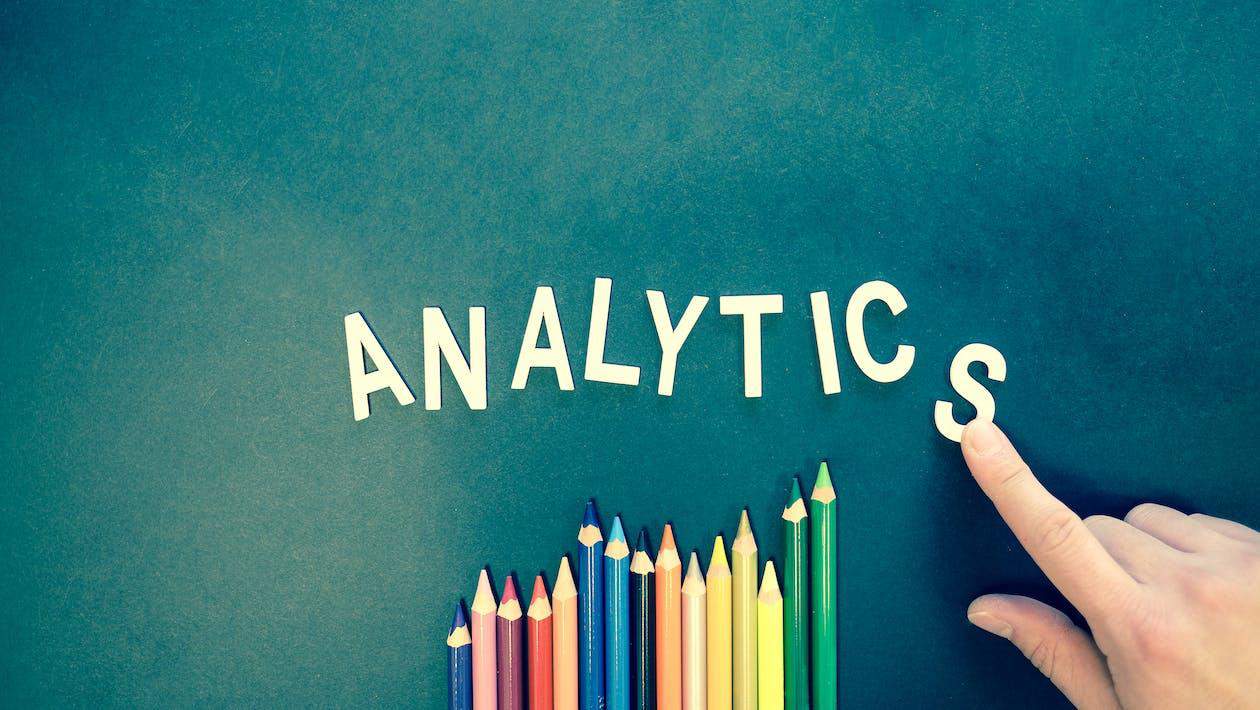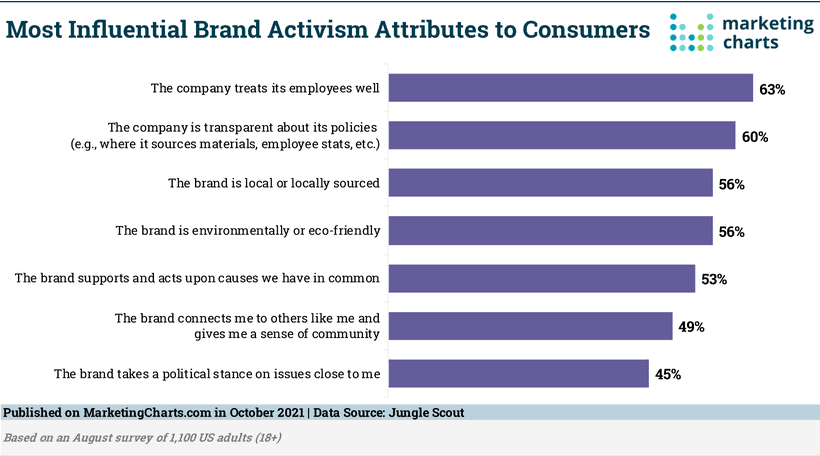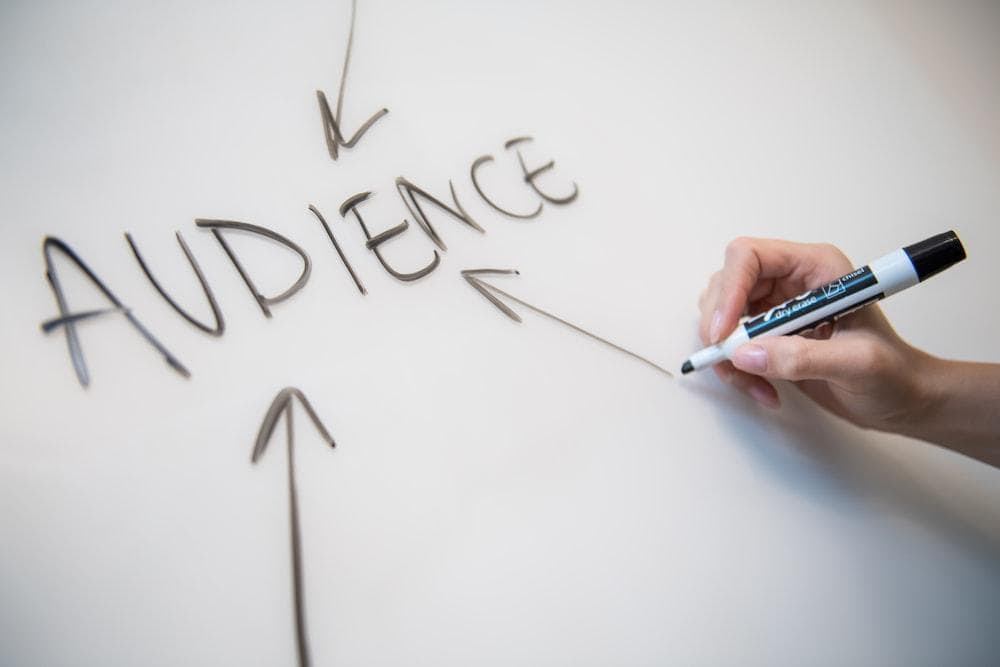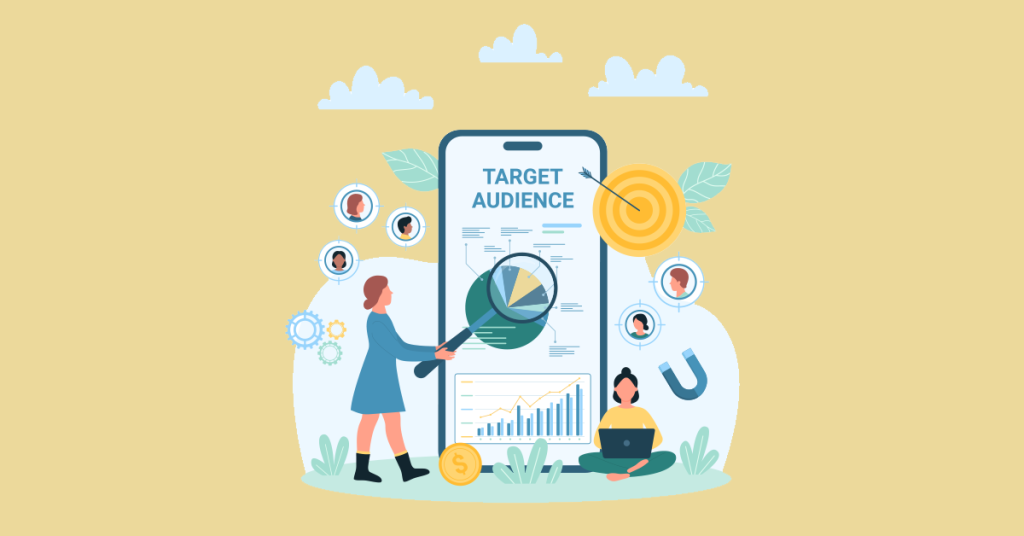How well do you know your audience?
If there was an FAQ for marketers, that question would be right in the top three.

Free to use image sourced from Pexels
And for good reason! Without understanding your target audience, how can you create products, services, and marketing campaigns that reach them effectively and successfully?
A good marketing strategy needs to be relevant, engaging, and personalized to the audience you want to capture. And how do you pull off a killer marketing campaign? With plenty of data.
That’s where target audience analysis comes in.
Target audience analysis is a vital tool for collecting and analyzing audience data, allowing you to improve your marketing campaigns using insights into audience demographics, sentiments, and behavior.
In this article, we’ll define what target audience analysis is, list its many benefits, and take you step-by-step through the process of implementing it into your next marketing strategy.
What is target audience analysis?
So… how well do you know your audience?
We can all fall prey to overestimating our knowledge and making assumptions. We might think we know our audience inside and out, able to pull off top-notch products and marketing campaigns without a thought.
But people are complicated, messy, and surprising, and target audience analysis helps to bring some clarity and coherence to it all. Specifically, target audience analysis provides a deeper knowledge about a brand’s audience – the audience we have and the audience we’d like to capture.
Forget surface-level categorizations based on preconceived notions; target audience analysis helps brands gather rich, high-quality data about target audiences straight from their own words and behaviors.
Brands can collect and analyze data from social media, review sites, message boards, email sign-ups, and other online spaces to better understand what customers want.
Target audience analysis isn’t nearly as complicated as it sounds. Don’t worry, you won’t need to learn how to code or ask yourself “what is spark SQL?” In fact, nailing your target audience analysis strategy can be done easily by following the steps we’re about to reveal.
How can target audience analysis benefit brand marketing?
Target audience analysis is all about utilizing data to understand your target audience and deliver on their expectations.

Free to use image sourced from Unsplash
This data offers insights about your intended audience, allowing you to create marketing campaigns that are relevant to their interests, catch their attention, and provide the kind of content they engage with.
To better understand target audience analysis, let’s look at the main marketing benefits.
Understand audience demographics
Marketing departments have been trying to understand and categorize audience demographics since the dawn of marketing. Luckily for us, we live in the age of the internet.
Demographic data like age, location, socioeconomic status, identity, and even a person’s ethical and political stances are often openly discussed on social media, in reviews, and across message boards.
This data can be analyzed to create more in-depth audience segmentation, allowing you to precisely target your marketing content and messaging.
Analyze and predict customer behavior
Each customer goes through a series of stages throughout their customer journey:
- Awareness
- Consideration
- Decision
- Retention
- Loyalty
Being able to understand the behaviors of your target audience can help you predict purchasing habits.
Understanding how your audience interacts with each step can help you create touchpoints that guide customers through that journey, offering them a more personalized experience.
For example, a brand that provides beauty products will generally have customers who make semi-regular purchases at certain times – like when they run out of a product.
Being able to analyze a customer’s product buying schedule lets you know when they might be ready to make a repeat purchase. You can send targeted marketing emails to that customer, reaching them at that crucial moment when they’re considering their next purchase.
This is just one example of how understanding and proactively addressing customer behavior lets you personalize the overall customer experience.
Analyze customer sentiment

Free to use image sourced from Pexels
Understanding your customers’ sentiments towards your brand can help you improve aspects of your products and services, which in turn helps you better market your brand.
You can analyze customer sentiment regarding your own brand by looking at customer satisfaction with your products and services. Social media and review sites can tell you:
- Which products and services hit the mark.
- Which products and services have issues in need of fixing.
- How well your customer support resolves problems and deals with unhappy customers.
- Which marketing campaigns connected best with audiences in terms of tone, aesthetic, type of content, timing, etc.
- Which marketing campaigns spread furthest in terms of engagement and virality.
You can also look into sentiment regarding your competitors. How does your target audience feel about rival brands? If sentiment is good, how can you do better? If sentiment is mixed or negative, look for ways to capitalize on your competitors’ weak points to market your own brand.
Cut costs and increase ROI
Without data, marketing can feel like a scattershot approach to engaging audiences. Brands can waste a lot of time, money, and resources crafting elaborate campaigns that miss the mark.
Yes, data comes with its own costs. Data collection is a big undertaking, and data storage requires proper tools such as a data lakehouse (what is data lakehouse?) or cloud storage solutions.
But a deeper understanding of your target audience allows you to craft marketing campaigns that deliver. This means less waste and better ROI.
Turn audiences into customers
Ultimately, your goal is to turn an audience into a customer base – preferably one that makes repeat purchases, has brand loyalty, and advocates for you.
But it’s difficult to capture people’s interest in a saturated market.
Target audience analysis gives you a leg up by providing you with the data to create relevant, personalized marketing campaigns.
5 steps to improve marketing using target audience analysis
Now you understand what target audience analysis is, let’s look at how to implement it.
Define your goals
The data you require will depend on your brand, products, industry, and a whole bunch of other specifics that only you understand.
Before diving into target audience research, you need to define your objectives and the kind of data you’ll need to achieve them.
Your end goal might be greater social media engagement, improved brand recognition, increased sales, or scaling your managed service provider business.
To get there, you’ll need to decide which target audience data you’d like to collect and how you’re going to use it.
There are a number of different target audience analysis categories, as listed below.
Demographic
Demographic analysis is a good starting point for further target audience analysis. It’s the more surface-level stuff:
- Age
- Gender
- Socioeconomic status
- Location
- Occupation
You can use demographic data as a jumping-off point to analyze each demographic more thoroughly.
For example, what kinds of sociopolitical values can we interpret from age group demographics? How do age demographics overlap with socioeconomic status and occupation?
Psychographic
Psychographic analysis dives into a person’s values and beliefs.
The dawn of the internet brought the mass dissemination of information. Since then, we’ve seen a massive increase in social and political awareness and discussion.
People are often vocal about their values and are ready to put their money where their mouths are. They’re ready to patronize brands that share those values and drop ones that don’t.

Image sourced from marketingcharts.com
It’s worth being an ethical, environmentally friendly brand that treats its employees well and doesn’t abuse its customer data just because.
But from a purely business perspective, understanding your target audience’s values and marketing yourself accordingly has major benefits.
Behavioral
Behavioral analysis looks at how your audience behaves:
- How often do they make purchases?
- How likely are they to make repeat purchases?
- How do they interact with your products and services?
- How often do they interact with your brand on social media?
- How likely are they to like and share your content?
- Do they create a lot of user-generated content?
- Do they reach out to customer support a lot?
- How likely are they to leave reviews?
Behavioral analysis can help you identify patterns that let you reach out at the right moment, create relevant messaging, identify preferred content, and develop better marketing campaigns.
Behavioral analysis also helps you identify high-value customers and tailor your marketing to convert and retain them.
Cultural
Marketing hasn’t always been culturally sensitive. It has often relied on stereotypes, exclusionary language, and a disregard for traditionally underserved demographics.
Modern audiences expect better.
Cultural analysis puts a person’s culture and identity at the forefront, allowing brands to create marketing that celebrates diversity and avoids old mistakes.
Geographic
Geographic analysis takes location into account.
Location data is important for things like weather-specific products or brands with brick-and-mortar stores. If you’re marketing your mountaineering wear company, for example, blowing your marketing budget in Florida probably isn’t the best use for it.
Find your target audience

Free to use image sourced from Unsplash
Your target audience is out there, and here’s how to find them.
- Social media channels – certain demographics prefer different social media platforms, so having multiple social media accounts and prioritizing them based on audience saturation is a good idea.
- Email sign-ups – people who sign up for your newsletter or free product trial are already primed to become customers. They also provide information about themselves that you can use to target your marketing.
- Review sites – nobody wants to read a bad review about their brand, but review sites are an important place to gauge customer sentiment.
- Competitors – your competitors’ customers are your target audience, so look at who is engaging with them.
- Internet forums – there are tons of places online where like-minded people can meet and discuss their careers, hobbies, and interests. Internet forums host some of the most in-depth discussions you’ll find, so find places that are related to your industry and learn more about your target audience than you ever wanted to know.
- Customer surveys – offer customers a chance to give you direct feedback.
Once you’ve located your target audience, you’ll have access to all the data you need.
Get the right tools
Data collection and analysis require a few tools.
There are plenty of apps out there to help. To find the right ones, prioritize which features you need and look for software that has them. For example, if you need to store and analyze complex data, look for software that supports parquet file formats.
You can search the web, read reviews, and ask industry peers for recommendations.
Collect and analyze
You know what data you need, you know where to find it, and now it’s time to collect it for analysis.
You can start by gathering data from your existing audience on social media, from customer surveys, and through review websites.
Many social media platforms have their own insights for businesses to utilize, such as engagement statistics and follower counts. Web search platforms also have analytics that allow you to check your site rankings.
Once you’ve collected the data, you can analyze it to find patterns and insights that will help you improve your marketing strategies.
To simplify the entire process, there are automation tools out there that can collect and analyze data. Cutting-edge technology like customer relationship management software, data labeling, and artificial intelligence can make data collection and analysis more efficient.
Once you have existing customer data, you can apply what you’ve learned to capture new audiences.
Test and adapt
The wonderful thing about target audience analysis is that it provides ongoing improvement.
Once you’ve done your research, you’re ready to apply it to your marketing campaigns.
But then what? Well, you keep collecting and analyzing data. You keep getting better, more relevant, and more engaging.
Was your new campaign a success? What worked? What didn’t? And how can you improve even further?
It’s a constant cycle of testing new ideas, collecting data on your successes and failures, and honing your ideas for the next campaign.
Using target audience analysis to improve marketing

Free to use image sourced from Unsplash
Modern customers are more demanding than ever – they know what they want and they’re not afraid to speak their minds.
Marketing is a cutthroat world where everyone is looking for an edge. So what if that edge is the modern customer?
Audiences love to make themselves heard and for brands willing to listen, there are plenty of benefits.
Target audience analysis allows brands to analyze audience demographics, sentiments, and behaviors to gain a deeper understanding of what customers really want. This allows brands to create marketing campaigns that reach target audiences and deliver on expectations.
To grow your brand and improve your connection with your audience, utilize target audience analysis and boost your next marketing campaign.

